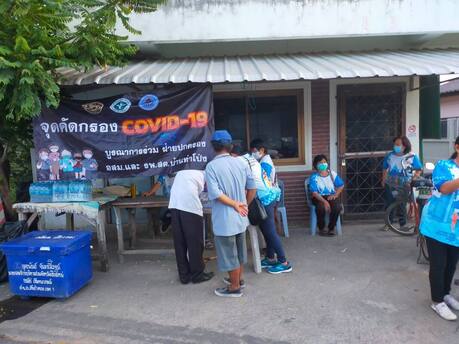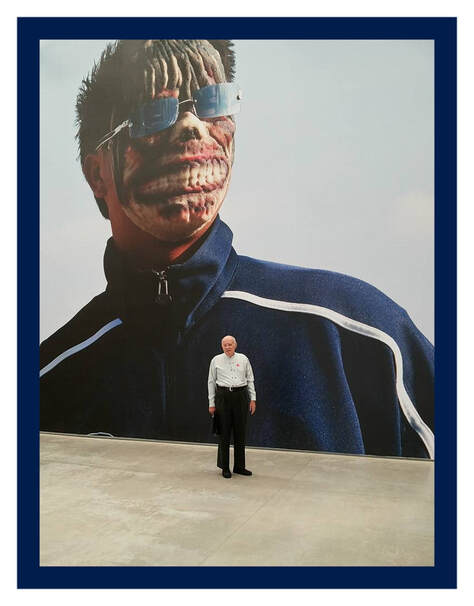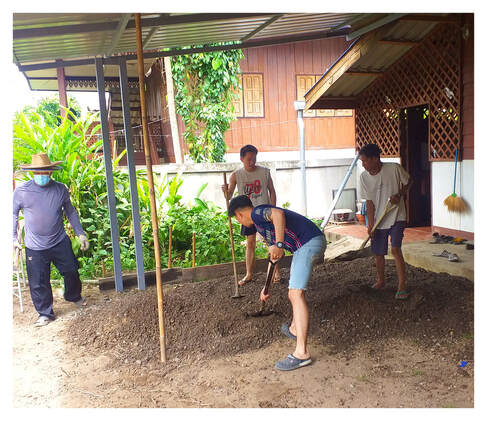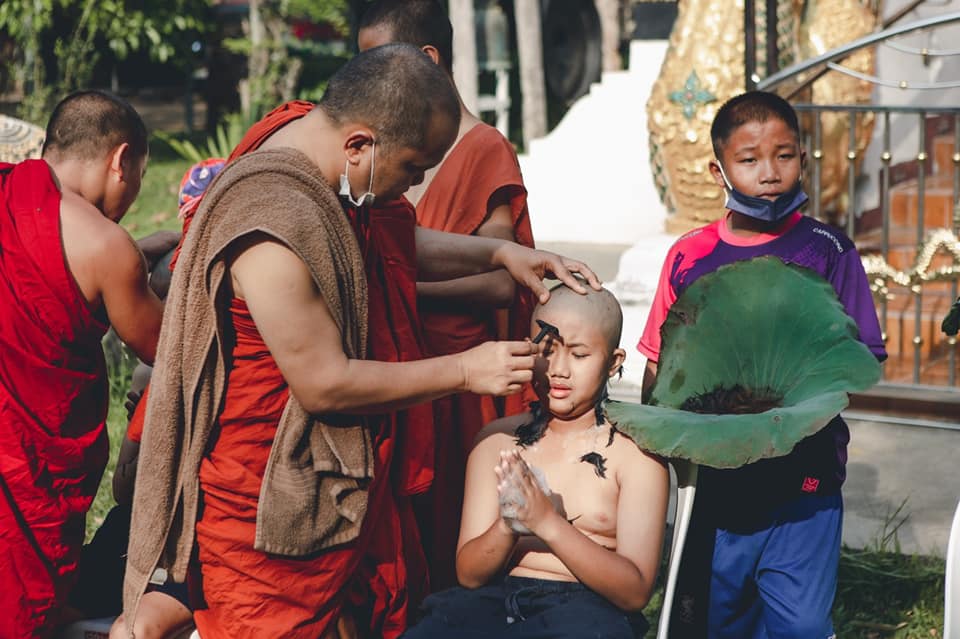|
Search for a Thai Case Study Suggestion
Let’s make a suggestion about a case study from Thailand for a course to be offered at a college in the USA. This is a course in the theater arts curriculum. The course description says: Fat Men in Skirts The class will examine performative elements of gender and how those elements are descended from traditional theatrical approaches to text and practice, specifically that of drag performance. Issues of gender identity and performance will be explored in both Western and non-Western cultures. …The overarching aim of this course is to provide students with an understanding of gender and drag performance as a culturally variable product and to broaden students’ understanding of genders, sexuality, and performance through a variety of case studies. The course explores the ways in which cultures, Western as well as non-Western, construct and provide meanings to gender roles. It seems obvious to me that Thailand has several types of performance variations. They include the following major types: · Cabaret theater · Trans-gender contests · Costume events · Memes on social media · Actors in supporting roles in dramas · Personal presentation CABARET THEATER is a Thai specialty. There are internationally famous theaters in several cities. The original was Tiffany Cabaret, that began as a one-man show in 1974 in Pattaya. More than a dozen large-stage productions are listed now – most of which are languishing due to COVID-19 all the performers are male or once were male. TRANS-GENDER CONTESTS are modeled on international beauty pageants, but are limited to transsexual contestants. The main contest in Thailand is the Miss Tiffany’s Universe contest. The winner goes on to participate in an international contest to select “Miss International Queen”. There are also similar contests for gay men. It can be argued that transgender (male to female) contests originated in Thailand. COSTUME EVENTS do not necessarily feature transgender performers, but they may do so. These are usually one-time events (as opposed to cabaret theater which have regularly scheduled shows). Such performances can be at the beginning of sports events or conventions, but they may be private parties as well. MEMES are the newest type of performance art to feature gender-diverse performers. Not all memes involve performance, in fact most are cartoons or photographs of something other than people (cats are a favorite, food is another). In Thailand there are specialists who use selfies and pictures of themselves to convey a message about gender and human rights. I believe Sirisak is the most recognizable meme performer in Thailand. ACTORS (transgender), usually in supporting roles, are a staple in Thai films and on TV. Gender-bending performances are so routine that almost every angle has been exploited. But the unique Thai layers of meaning are certainly worth consideration. PERSONAL PRESENTATION, meaning how individuals present themselves in daily life or in their work-role, expands the definition of performance and considers “all the world a stage”. In this respect Thailand may be more conservative than some other countries. Still, there are a few celebrities who defy opposition, and also defy attempts to escape attention and pass unnoticed as the gender which their costume indicates. We rarely see fat men in skirts unless they are at the front door of a gay bar. Have I missed any? What would you suggest as a case study that tells something important about Thailand’s unique way of manifesting gender diversity?
0 Comments
Thailand is entering the mid-crisis phase of the COVID-19 pandemic where public pressure to end restrictions is almost in balance with pressure to end the epidemic. Vaccination, of course, is the solution to stop COVID from spreading and then to assure everyone’s safety.
Thailand’s officials were apparently lulled by the lack of cases and the success of shut-downs and aggressive tracing throughout 2020. It seemed there was plenty of time to figure out a way to get vaccine cost-effectively, and even to develop a vaccine production capacity here in the country. But all hell broke loose just after the New Year. One epicenter after another was discovered, beginning with immigrant shrimp workers in Samut Sakorn near Bangkok, soon followed by outbreaks from careless students in April. All the hopeful plans for re-starting tourism fell into ruins. One holiday after another came and went with devastating economic results as even domestic tourism dwindled despite cash incentives. The only hope in sight is the now burgeoning vaccination program. But public suspicion of the effectiveness and side-effects of the most available vaccines is spreading. The current government has shown no improvement in its public-relations skill even though it’s had 7 years to do so. I give them credit, however, for being pretty open about COVID, with daily reports that have not tried to hide or muddle the statistics. The same Public Health Ministry has constantly provided stimulation, supplies, and information via the nationwide Village Health Volunteers program. This has actually reached the grass-roots level in virtually every village. The latest effort, however, is a mystery to me. Mysteries of this sort tend to be clarified in time, but I cannot quite fathom what is going on with the Khat-grong COVID-19 [คัดกรอง COVID-19] project. It’s a “COVID-19 Screening.” All it amounts to so far is a brief event sponsored by Village Health Volunteers with the local clinic. The event consists of putting up the sign (in the picture accompanying this blog) and a public announcement that the event is going on. If you go, you get your temperature taken. Almost nobody went to the screening in our village the other night. This screening event moves from village to village. So, it seems like this is mostly about keeping everybody aware that there is action going on and progress is being made against the epidemic. This is necessary because every day we hear of a new outbreak and a new worry. Vaccine is still unavailable to almost everybody except health workers and people with special privileges. New cases every day are still in the thousands. The way a new outbreak is discovered, despite “screenings” such as this, is when people get so sick they go to the hospital. “Identity politics has got to stop. We have got to give up our ‘endless preoccupation with a FRAGMENT of identity. Identity comes from consciousness which transcends all these divisions of race, ethnicity, and gender. There is no sense of CONSCIOUSNESS ITSELF’ anymore.” So says Camille Paglia on a YouTube recording of “Dose of Truth” in October 15, 2017.
On the one hand, I thoroughly agree with her that popular thinking misses the picture as a whole. Our attention is limited. Knowledge, and all the data that passes for knowledge, is overwhelming; so we pick targets. Those tend to be self-directed, even if they are “progressive” and advocate peaceful coexistence. I love it when hostility is muted and divisions are blurred. I want peace for Burma and human rights for Palestine. I want racist monuments in America removed from public spaces and American racism recognized and renounced. I don’t think it’s possible to overcome divisions of race, ethnicity, and gender without identifying ourselves within those communities and waking up. I think Paglia is right: these days, because of our focusing on areas of concern to the exclusion of a holistic vision of reality, what we have are fragmentary perceptions. This reduction of interest began as a reaction to the immense universal trauma of World War I-II and the paranoia that fractured the world during the Cold War. Only a cataclysm of that magnitude could have destroyed the massive theological and philosophical search for a comprehensive approach that integrates everything that can be concluded about God and us. In philosophy the search was on for the concept underlying everything we can know. By the end of the international military battles in 1945 interest in universal truth was being replaced by searches for relevance. The trauma of war loomed as a miasmic aftermath. Conflict and chaos claimed the collective unconscious, so people agreed that immediate individual existence was what could be maximized. This led to 4 generations refining strategies for resisting cohesion beyond those things that might be expedient to optimize existential priorities. Interest groups are the largest effective political entities. Even governments have reduced objectives, now looking for achievable benefits rather than anything approaching “the general welfare of the people.” Governments are put together, in fact, by interest groups with single objectives. The consequences of this myopic vision have been serious: fragmentation of political units and outbreak of localized conflict (even ethnic cleansing), polarization of societies, and unremitting discord. Rather than optimized existence, people have desperation muffled by cycles of relief as some terror diminishes (as when a vaccine mitigates a pandemic, or intervention ends a genocide). “That’s better,” a sigh, and a wan smile. Forgetfulness is the antidote because it’s all the cure there is right now. Paglia is right. This is not as good as it could be. She is right that we need to regain more than fragments of our identity. She thinks we need to get back to an educational program that enables us to understand who we are, beginning not with 1619 or the birth of Christ, but all the way back to Neanderthals and Humanoids. We need to study our enslavement by archetypes, and how to identify ourselves as complex beings. Paglia says that the way to do this reclamation of “consciousness itself” is to reform education to assess the big picture, because acquiring our identity is a result of becoming conscious. Then, she says, we’ll be on a better path. Paglia must be wrong, however, when she suggests the immediate end of campaigns to improve conditions of those oppressed by racism, xenophobia, and homophobia. Paglia is a famous feminist, after all. But she is on record arguing against a wide range of gender rights, especially the right of young adults to dispute their birth-sex. She opposes the demolition of traditional roles of men and women. That is the clue that we’ve been here before. The reason education has moved away from philosophical and historical focus on how we got here from the very beginning, is that the philosophers and historians beginning way back then could never quite make it to today where people live and die. Those who compose these philosophies and histories miss the junctures where civilization abandoned people. Today’s “identity politics” are correctives. We cannot afford to take a great collective leap into the past, even if we could do it. Individuals can and should make the effort to acquire an understanding of consciousness. Consciousness is a basic and essential human function. It remains doubtful to me that historical reassessment is a way to an “ah-ha” breakthrough into Consciousness Itself. I’m opting for another avenue that does not involve renouncing all we have learned about how to be advocates. In this Asian part of the world “what a family is” depends on local differences. I will describe what I have seen and studied personally.
A Lanna family consists of parents and their descendants. This is what functional sociologists would describe as a form of extended family. “An extended family consists of parents, children, grandchildren, aunts and uncles living under one roof.” The Lanna (Northern Thai cultural) form would say, “The 21st century version of an extended family consists of all the members who could potentially live under one roof.” Actually, what happens is that the extended family members might live under separate roofs but can and do move in and out as needed. People outside the extended family would not presume to have that right. Because this is Lanna, and not Central Thailand, it is more easily assumed that the male spouses will move in with their wives and become part of the female’s extended family (but this is not hard and fast, it depends on the nature of the bond/marriage and maybe also financial circumstances). If little children need care, elderly relatives, especially grandparents, might move in with children in order to be on hand. Children are the primary responsibility of the mother and father, as in nuclear families. But if the living unit consists of multiple individuals, little children are cared for by everybody. A child’s actual mother and father would have veto power over a decision with longer-term consequences, such as where the toddler goes to nursery school, but would hesitate to countermand a relative who is providing the child something to eat. If a child needs help, extended family not only provides it but feels responsible to do so. In Lanna families (until this generation) children were raised jointly. Members join the family gradually. If a young adult takes a spouse (I use this phrase carefully) the new member of the family is actually accepted in several ways. (1) The relationship is accepted and acknowledged, and the new person is expected to participate in family events and take a share of responsibilities as he/she may be able (the greater the ability, the greater the share). (2) The couple may “move under the roof” literally, either permanently or from time to time as they choose, for they have the right to do so. (3) The other extended family, the side of the couple’s family living elsewhere perhaps, retains the right to familial loyalty, help, and affection; this must be mutually expressed from time to time, particularly during transitional events such as weddings, funerals, house blessings or ordinations. (4) When a project comes up needing help from everybody, everybody is expected to show up or have a good reason for not doing so. Special circumstances martial the resources of the entire extended family. That is an obligation. It is shameful if it is unmet. For example, in our village a man with cerebral palsy was living with his old mother; when she became less able to care for the two of them another child moved back, built a house next door, and took over. When the parents both die the extended family is not immediately dissolved. Not only their legacy and property unite the siblings as before, but shared responsibility does, as well. The extended family that began to be formed when the couple had children and established a house and home separate from other relatives will only gradually be transformed. The new extended family acquires a major measure of independence when all the grandparents are gone, and not before. [In the picture accompanying this essay, our nephew Arm decided to build a car-port next to his parents’ house, where he also lives. The construction was undertaken by every available member of the family, which fortunately included an uncle and cousin-in-law who have construction skills. A week later everybody was again recruited by another part of the family to help transplant the rice everybody will be eating for the next year.] Just this week alone my in-box brought me stories of how significant cutting hair is in Thailand.
Hair represents possession, attention to self, and control. The intention when one adopts a hair-style is to express one’s individuality and unique personal identity for all to see. Hair is a social demarcation. As with almost all aspects of Thai culture, haircutting is unique only with regard to the degree to which it is meaningful. Many religious orders around the world prescribe tonsures, shaving heads, or letting hair grow. Here, it represents loss. There is no shame in it. It’s not as if a shaven head is a mark of derision or a symbol of guilt. It is about humility rather than humiliation. It is a step toward abjection and suppression of ego. The step beyond cutting one’s hair is portended if not actually intended. The distraught mother has cut her hair both in protest against the injustice she feels her son is receiving and in solidarity with him in his hunger strike. If her son should die of his hunger strike in custody, I’d predict that his mother’s next step would be to shed her clothes and take the white robe of a nun. Suicide or self-immolation could be her ultimate step. In Vietnam, which is culturally very different, that would be a bit more likely than here. But cutting hair is a type of self-mutilation meant to express loss. Thai monks shave their heads and eyebrows to remove their most identifying aspect and to merge into the collective priesthood of disciples of the Lord Buddha. But an anthropologist can see this cutting as a form of disfiguration that is undertaken in other ways in other cultures. Post-Enlightenment Western cultures have abandoned physical forms of ritual humiliation, but residue can be found just about anywhere. Some of them are obvious, as in hazing, bullying, tattooing, fasting and other such measures. But the West has specialized in cunning forms of mental and emotional “conditioning” as well. In short, when Thai persons cut all their hair off their heads the action and results are spiritual as well as social. It is an act of defiance expressing willingness to relinquish something personal in order to achieve a higher goal. |
AuthorRev. Dr. Kenneth Dobson posts his weekly reflections on this blog. Archives
March 2024
Categories |
| Ken Dobson's Queer Ruminations from Thailand |
|





 RSS Feed
RSS Feed
